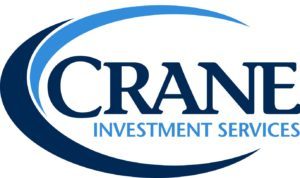At the heart of all kinds of life insurance is the ability to pay cash to a family after the insured dies. Life insurance may be used to replace lost income and allows financial plans to still be fulfilled. Insurances can be used for a number of purposes such as:
- Daily living expenses
- Mortgage payments
- College tuition
- Debt pay-off
- Wealth transfer
Let’s explore some of the different kinds of insurance policies that are available.
Level Term – provides a set amount of death benefit for a set period of time. Premiums are lower than whole life, but availability and/or price may be different when the term expires, based on age and health.
Decreasing Term – provides a decreasing amount of death benefit for a set period of time. Useful for specific purposes such as protecting a family’s ability to pay off a home mortgage (a decreasing term policy could be written for the term of the mortgage with the death benefit decreasing as the mortgage balance declines). Many term policies are also convertible, which means they may be exchanged for another type of policy, such as whole life.
Permanent (Whole Life) – Protection that combines a death benefit with cash value accumulations. The face amount is constant, and this amount would be paid if the insured dies while the policy is in effect. Premium payments are fixed and remain the same from the original effective date to the maturity date. Policies typically mature at age 100 – the age when premium payments would end and the cash value would equal the face amount; however, other maturity timeframes could be offered. At maturity, the face amount would be paid to an insured that is still living.
Long Term Care Insurance – An insurance policy for nursing home/assisted living facility and home health care costs. When long term care services are needed, and the member has met the policy benefit triggers, the long-term policy reimburses the member up to the daily benefit as a “reimbursement” for the costs incurred.
Disability Income Insurance – Designed to replace a percentage (generally between 45-60%) of a member’s gross income on a tax-free basis should a sickness or illness prevent them from earning an income in their occupation.
VUL (Variable Universal Life) and UL (Universal Life) – VUL insurance policies have a portion of the premiums invested in variable accounts and the cash value fluctuates with the performance of the investments in the variable accounts. UL insurance policies offer an investment that is linked to interest rates rather than a variable account. As interest is paid, the cash value increases. Both VUL and UL are fairly complex types of permanent life insurance. They can be very beneficial in select circumstances.
Group Life – Offered by employers as a benefit to their employees. Benefit amount is typically tied to the employee’s salary, and often additional coverage is available for an added cost. Valuable coverage, but often only available for as long as the employee is with the company.
Ready to get started? Contact us today!
Crane Investment Services advisors are registered representatives of CUNA Brokerage Services, Inc. Representatives are registered, securities sold, advisory services offered through CUNA Brokerage Services, Inc. (CBSI), Member FINRA/SIPC, a registered broker/dealer and investment advisor, which is not an affiliate of the credit union. CBSI is under contract with the financial institution to make securities available to members. Not NCUA/NCUSIF/FDIC insured, May Lose Value, No Financial Institution Guarantee. Not a deposit of any financial institution. CUNA Broker Services, Inc., is a registered broker/dealer in all fifty States of the United States of America.



